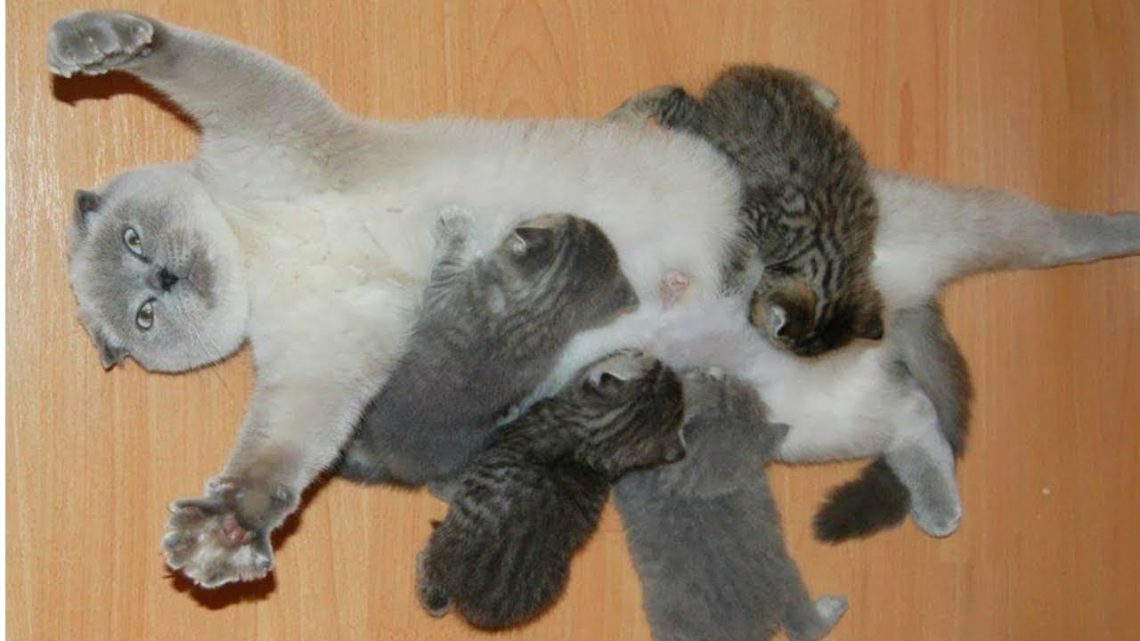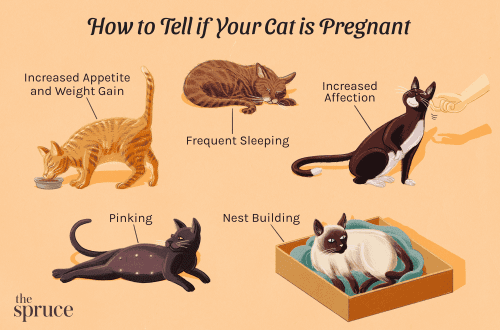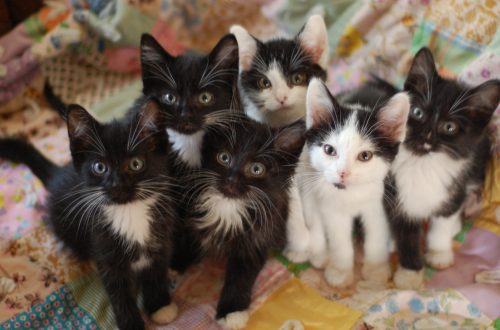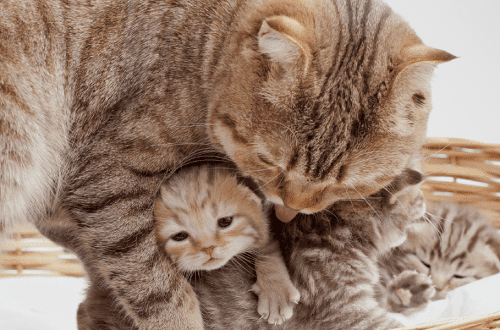
The cat feeds the kittens
How often to feed?
After the appearance of offspring in a cat, colostrum is released in the first 16 hours – a liquid that contains a huge amount of nutrients needed by kittens. Especially a lot of antibodies in it, which are important for strengthening immunity. Over time, their number decreases, and colostrum turns into milk rich in proteins, fats and carbohydrates, which the cat will feed her offspring. But it is very important that all kittens receive colostrum in the first hours of their lives.
Kittens are born blind, but with a good sense of smell, thanks to which they will easily find a source of food.
At first, they will eat at least ten times a day, gradually the number of feedings will be reduced: after the first week, up to eight times a day, and in the fourth – up to six.
How long to feed?
The duration of breastfeeding depends on many factors. On average, a healthy cat can nurse kittens for up to 1,5 months.
To prevent the milk from disappearing ahead of time, it is necessary to monitor the quality of the cat’s nutrition: its diet should include useful minerals and substances that contribute to the continuation of lactation. For lactating cats, there are special foods from Royal Canin and Pro Plan.
In addition, it is necessary to monitor the health of the cat: postpartum complications and parasites can adversely affect lactation.
How to feed?
When the kittens are one month old, they need to start feeding ready-made feeds, since they no longer have enough mother’s milk for growth and development.
Unfortunately, sometimes a nursing cat does not initially have enough milk – in this case, the kittens sleep little, squeak, and gain weight poorly. As soon as signs of malnutrition appear, kittens should be urgently supplemented. But, before you start complementary foods, you should consult with your veterinarian.
Complementary foods should be introduced after the kittens attach to the mother’s breast – this way they will better work the sucking reflex. You can give babies a mixture of water using a special bottle with a nipple or a syringe without a needle. As a rule, there is more milk in the last nipples of a cat, so the most frail and weak kittens should be placed there. If kittens do not have a sucking reflex, then they will have to be fed through a special tube, since bottle feeding and especially feeding from a syringe may be contraindicated due to the risk of developing aspiration pneumonia due to inhalation of the mixture.





